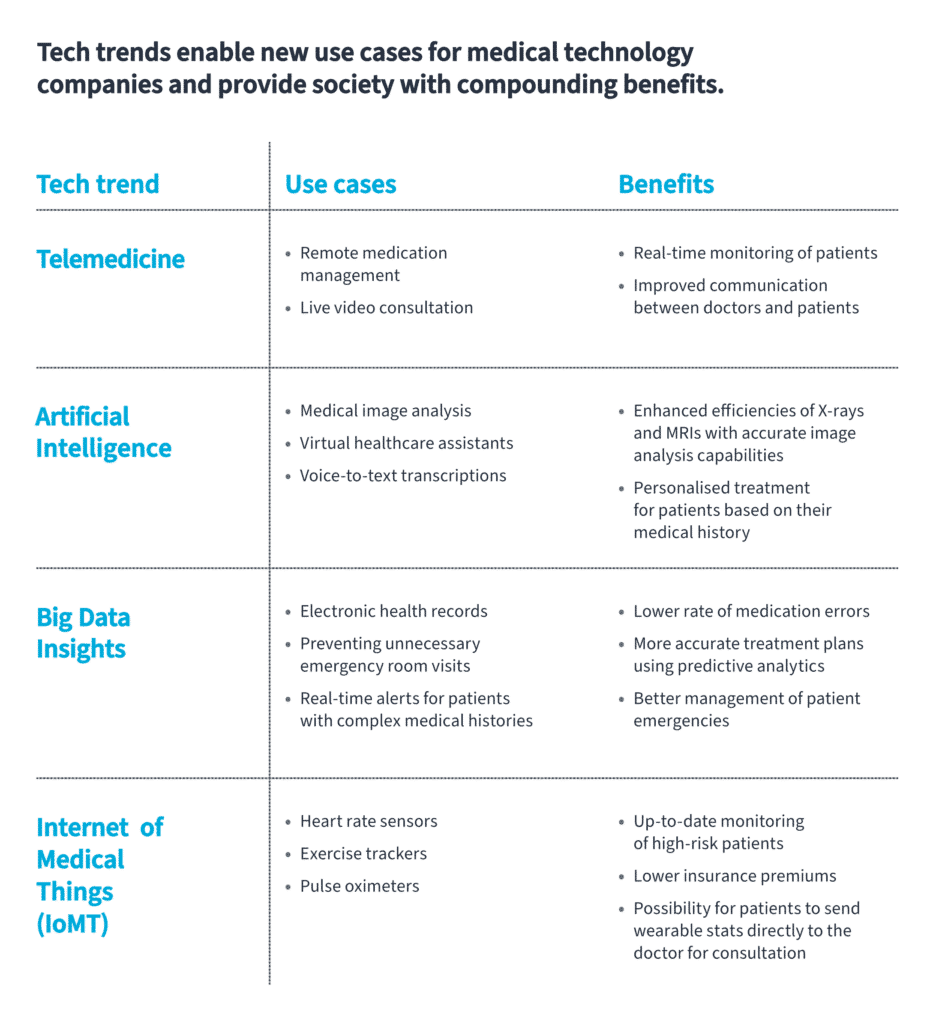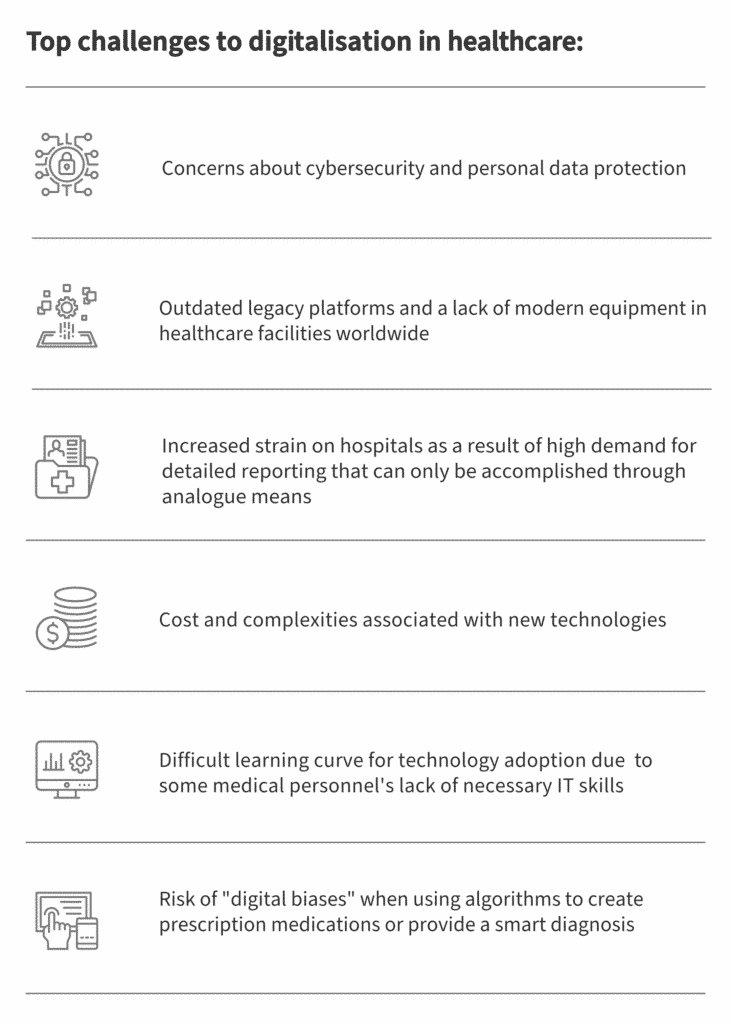The medical technology industry is a strong and stable sector that is known for its resilience during economic recessions and global events such as the COVID-19 pandemic and the current energy crisis. Health is one of the primary concerns of people, and this does not change much during difficult times. However, this comfortable business position also has its downsides. Without significant market stress, companies do not feel an urgent need to innovate or increase their operational efficiency.
Nonetheless, this situation has been changing in the last several years. A study by Gartner clearly shows that increasing healthcare costs is one of the main business threats. Governments and consumers alike are demanding cheaper solutions. Additionally, rapid technological advancements in Cloud, IoT, AI and other areas are enabling startups and companies outside the traditional medical space to enter and disrupt the market. These advancements are also bringing about new megatrends that the industry will need to capitalise on to maintain their competitive advantage. Regulators such as the FDA and the EU have also increased their expectations – for example about cybersecurity and Software as a Medical Device (SaMD) – which can only really be met when companies digitalise their business processes. Hence, based on the current development of the trends and the market, companies need to undergo digitalisation if they are to survive in the years to come.
Telemedicine as the driving trend
Swiss Medtech’s office carried out a study on the MedTech sector in 2020 showing that there are few trends as important as telemedicine. Even though it might seem outdated, we firmly believe that this is still valid. Telemedicine promotes moving healthcare caregiving, in particular, outside of hospitals and clinics. As a result, human stress and financial strain are reduced. For example, medicine injections can be performed in the comfort of a patient’s home, live consultation can take place online, appointments can be made on demand, and patient monitoring can be continuous. Furthermore, the communication between doctors, caregivers and patients can be significantly improved.
In order to enable these use cases, devices and applications need to be connected and smart. This necessitates IoT solutions, data processing systems, and service automation such as remote monitoring and back-office processes. New technologies for invasive and non-invasive measurements and treatments, such as continuous glucose monitoring (CGM) and disease treatment through intravenous or intramuscular medication, are both requirements and enablers for trend adoption.
These digital health platforms and their increasing interconnectivity provide an opportunity for big data solutions. Data silos that individual companies may already have are enriched by the integration of these new systems. Business intelligence suites and specialised machine learning algorithms can provide valuable insights. When data is managed and utilised properly, these insights from this wealth of data lead to product improvements, increased efficiency and entirely new business models – further developing a company’s competitiveness and securely establishing it as a leader in the modern medical technology market.

Synergy benefits to address the challenges ahead
Gartner’s study shows that organisations are by- and large not ready to reap the benefits of digitalisation. Medical systems have until recently been developed mostly without taking integrated user journeys into consideration in their product vision. Companies need to make UX, and its practice of user persona modelling, a central aspect of product design.
The medical products out on the market often comprise outdated legacy platforms and equipment. Product life cycles are typically long. As an example: larger systems such as laboratory-scale blood analysers last more than 10 years. These products were not designed with “integrated” use cases in mind, and typically lack the data collection and connectivity functionalities. It is not feasible to retire these products, and the time to market (TTM) for a new system is often up to five years. However, greenfield development may work for new product classes with fast TTMs. This is not an easy decision, and companies need to consider their business strategies and choose between iterative product improvements and greenfield development.
The need for digital health platforms puts companies in a dilemma. Such systems are large and complex, and expensive to build and operate. This is not something companies can create overnight and requires a significant investment of time, money and resources to implement. Consequently, the tendency is for companies to build ecosystems through strategic partnerships. By collaborating with companies from other market niches and bringing various expertise together, partnerships can build such platforms and with them provide meaningful benefits to the end users and their increasing needs.
Companies need to acquire key skills in-house to enable their new use cases and business models. Machine learning and big data particularly stand out as the competencies that make or break their success. However, this reliance on data makes companies vulnerable to cybersecurity threats. As a result, companies need to strengthen their security posture, both digitally and organisationally, something that regulators like the FDA recognise and are starting to demand.

Exciting times
It is an exciting time to work in the medical technology sector. The clear trends and market disruptions require companies to be innovative and collaborative. Some will reinvent themselves, others will improve their products and businesses, while still others won’t survive the technology onslaught. Hence, senior leadership needs to be tech savvy in order to make the right calls early on.
Cutting-edge technologies such as multi-clouds, IoT ecosystems and advanced AI are being adopted as companies build centres of excellence to foster these competencies. Complex application integration requires thoughtful systems design.

